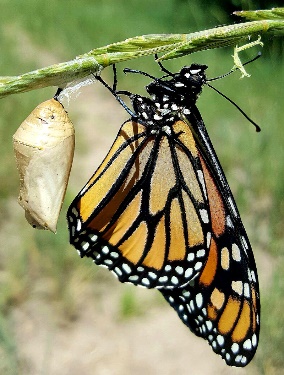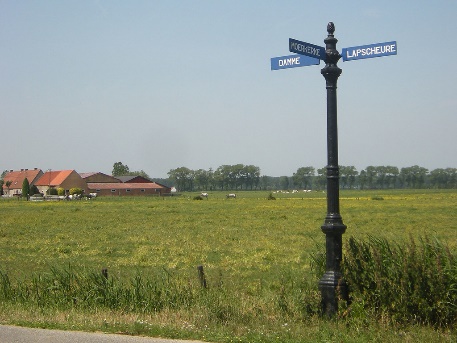De Chemie van Verandering: Van Drugslab naar Preventiewerker

"Hoe neem ik nou die stomme beslissing om die drugs te gaan verkopen?", vraagt Joop Gottmers zich af terwijl hij terugblikt op zijn turbulente verleden. Een verleden waarin Gottmers zijn carrière als bokskampioen opbouwde. Het is een periode waarin hij echter gerekruteerd werd in het drugsmilieu. Van het verkopen van cocaïne in kleine hoeveelheden, groeide Gottmers’ handel uit naar de grootschalige verkoop van hasj en amfetamine. Na een gevangenisstraf herstartte Gottmers zijn cocaïnehandel, zette hij een amfetaminelaboratorium op poten en installeerde hij een cannabisplantage. Intussen is het een kwarteeuw geleden dat Gottmers de handdoek in de ring worp en met pensioen ging van zijn criminele carrière.
Er is echter weinig geweten over dergelijk desistanceproces bij druggerelateerde georganiseerde criminaliteit. Gottmers wordt in dat opzicht als interessante “casus” beschouwd om de factoren belangrijk voor dergelijk proces te bestuderen. Het is daarom dat diens verleden door Evelien Lootens, een studente Criminologie aan de Universiteit Gent, nauwgezet onderzocht wordt in haar masterproef. Het resultaat is een diepgaande analyse van Gottmers’ criminele carrière en zijn uiteindelijke veranderingsproces (ook gekend als ‘desistance’).
Een Complex Web van Persoonlijke, Sociale en Structurele Factoren
Gottmers’ reis naar een nieuw leven reikt echter verder dan louter persoonlijke beslissingen die hem op deze weg plaatsten. Gebeurtenissen zoals zijn opstart van een carrière in de handel van drugs, maar ook zijn beëindiging van dergelijk crimineel traject, zijn immers niet alleen vervlochten met hemzelf. Integendeel, Lootens’ onderzoek onthult dat Gottmers’ traject verweven is in een complex web van persoonlijke, sociale en structurele factoren. Deze factoren, die zich op een continuüm bevinden, hebben het pad van Gottmers zowel positief als negatief beïnvloed, en vormen samen wat Lootens ‘crimineel trajectkapitaal’ noemt. Deze factoren, afhankelijk van hun invloed, zouden een persoon immers kunnen introduceren in een criminele carrière, maar ook een beëindiging van zulk traject kunnen bespoedigen.
Persoonlijke transformatie: Van sportman, naar “crimineel”, naar preventiewerker
 Gottmers’ levensverhaal is een achtbaan van identiteitstransformaties. Ooit een gevierd sportman, werd hij een drugshandelaar, gedreven door een verlangen naar erkenning en financiële voorspoed. Maar zijn reis eindigde daar niet. Door een combinatie van religieuze bekering en de wens om een betere vader te zijn, onderging Gottmers een tweede metamorfose, deze keer naar een sociaal geëngageerd individu en een verantwoordelijke ouder.
Gottmers’ levensverhaal is een achtbaan van identiteitstransformaties. Ooit een gevierd sportman, werd hij een drugshandelaar, gedreven door een verlangen naar erkenning en financiële voorspoed. Maar zijn reis eindigde daar niet. Door een combinatie van religieuze bekering en de wens om een betere vader te zijn, onderging Gottmers een tweede metamorfose, deze keer naar een sociaal geëngageerd individu en een verantwoordelijke ouder.
Deze transformaties zijn echter niet lineair of eenvoudig. Ze zijn doordrenkt met tegenstrijdige cognitieve processen, waarbij Gottmers veelvuldig worstelde met zijn eigen morele code en de gevolgen van zijn acties. Desalniettemin benadrukt zijn uiteindelijke succes in het verlaten van zijn criminele leven de mogelijkheid van positieve verandering, zelfs te midden van talrijke struikelblokken en tegenslagen.
Sociale netwerken: Het zwaard met twee scherpe kanten
Gottmers’ traject werd sterk beïnvloed door zijn sociale netwerken,  die zowel een bron van criminele verleiding als prosociale steun waren. Zo speelde zijn vriendschap met een persoon uit het criminele milieu een cruciale rol bij het initiëren van zijn criminele carrière. Tegelijkertijd waren positieve relaties, zoals die met zijn dochter, doorslaggevend voor zijn desistanceproces.
die zowel een bron van criminele verleiding als prosociale steun waren. Zo speelde zijn vriendschap met een persoon uit het criminele milieu een cruciale rol bij het initiëren van zijn criminele carrière. Tegelijkertijd waren positieve relaties, zoals die met zijn dochter, doorslaggevend voor zijn desistanceproces.
Gottmers’ verhaal illustreert de complexiteit van sociaal crimineel trajectkapitaal en hoe relaties kunnen evolueren gedurende een criminele carrière. Het benadrukt het belang van positieve sociale relaties als motiverende kracht voor verandering, en hoe het ‘giving back’-principe, waarbij het individu iets wil teruggeven aan de samenleving, een cruciale rol kan spelen in het desistanceproces. Zo is Gottmers’ transformatieproces duidelijk zichtbaar door zijn inzet als preventiewerker, waarbij hij beleidsadvies geeft inzake de drugswetgeving, en lezingen geeft in het onderwijs.
Structuur: Een vangnet en een struikelblok
 Structurele factoren hadden eveneens een essentiële impact op Gottmers’ veranderingsproces. Gottmers’ initiële betrokkenheid bij criminaliteit werd mede gefaciliteerd door “positieve” structurele factoren zoals een vaste woonplaats en betekenisvol werk. Deze positief ogende factoren werden echter ingezet als een bron van criminele inkomsten. Zo diende Gottmers’ bedrijf als dekmantel voor zijn onderliggende drugshandel. Tijdens zijn desistanceproces waren factoren als een stabiele woonomgeving en betekenisvol werk daarentegen aanzienlijke hulpmiddelen voor verandering, aangezien die hem een platform boden voor zijn ontwikkelende veranderingsproces. Belangrijk is zodus evenzeer de wijze waarop kapitaal ingezet wordt.
Structurele factoren hadden eveneens een essentiële impact op Gottmers’ veranderingsproces. Gottmers’ initiële betrokkenheid bij criminaliteit werd mede gefaciliteerd door “positieve” structurele factoren zoals een vaste woonplaats en betekenisvol werk. Deze positief ogende factoren werden echter ingezet als een bron van criminele inkomsten. Zo diende Gottmers’ bedrijf als dekmantel voor zijn onderliggende drugshandel. Tijdens zijn desistanceproces waren factoren als een stabiele woonomgeving en betekenisvol werk daarentegen aanzienlijke hulpmiddelen voor verandering, aangezien die hem een platform boden voor zijn ontwikkelende veranderingsproces. Belangrijk is zodus evenzeer de wijze waarop kapitaal ingezet wordt.
Gottmers’ ervaringen tonen de dynamische aard van structurele factoren in relatie tot criminaliteit en desistance. Tevens benadrukken ze niet alleen de complexiteit van het navigeren door structurele barrières, maar ook het belang van het onderhouden van positieve, ondersteunende sociale banden.
Toekomstige Richtingen en Aanbevelingen
Gottmers’ levensverhaal is een krachtige illustratie  van de complexiteit van het desistanceproces. Dergelijke case study biedt waardevolle inzichten voor het ontwikkelen van effectievere interventies. Daarom beveelt Lootens een geïntegreerde aanpak aan die gelijke aandacht besteedt aan persoonlijke ontwikkeling, het stimuleren van sociale, ondersteunende relaties, en het navigeren door structurele barrières. Ze benadrukt het belang van flexibele en responsieve interventies die zijn afgestemd op individuele behoeften en omstandigheden. Een holistische benadering die rekening houdt met de unieke context van elk individu, kan op die manier de sleutel zijn tot een succesvolle desistance.
van de complexiteit van het desistanceproces. Dergelijke case study biedt waardevolle inzichten voor het ontwikkelen van effectievere interventies. Daarom beveelt Lootens een geïntegreerde aanpak aan die gelijke aandacht besteedt aan persoonlijke ontwikkeling, het stimuleren van sociale, ondersteunende relaties, en het navigeren door structurele barrières. Ze benadrukt het belang van flexibele en responsieve interventies die zijn afgestemd op individuele behoeften en omstandigheden. Een holistische benadering die rekening houdt met de unieke context van elk individu, kan op die manier de sleutel zijn tot een succesvolle desistance.
Wat betekenen de resultaten nu voor de academische wereld? Lootens stelt voor om diepgaander onderzoek te verrichten, waarbij longitudinale studies en kwantitatieve methoden kunnen worden ingezet om een systematischer inzicht te verkrijgen in de hoofdfactoren die bijdragen aan het desistanceproces.
Een Verhaal van Hoop en Inspiratie
Gottmers’ verhaal is niet alleen een levendige illustratie van de complexiteit van het desistanceproces, maar ook een bron van hoop en inspiratie. Het toont aan dat, ondanks een diepe betrokkenheid bij het criminele milieu, een positieve transformatie mogelijk is. Zijn ervaringen en expertise bieden essentiële inzichten voor toekomstig beleid en praktijken gericht op het ondersteunen van desistanceprocessen. Voorts benadrukken ze de noodzaak van een holistische benadering die rekening houdt met de complexe dynamiek van persoonlijke, sociale en structurele factoren.
Door zijn verleden en expertise te gebruiken om een nieuw leven van hoop en maatschappelijk engagement te smeden, illustreert Joop een levendige realiteit waarin desistance niet alleen mogelijk is, maar ook een bron van waardevolle inzichten en een nieuwe toekomst in het veld van desistanceonderzoek is.
Bibliografie
Adler, P. A. (1993). Wheeling and dealing: An ethnography of an upper-level drug dealing and smuggling community (2de editie). Colombia University Press.
Apel, R. & Sweeten, G. (2010). The Impact of Incarceration on Employment during the Transition to Adulthood. Social Problems, 57(3), 448–479. https://doi.org/10.1525/sp.2010.57.3.448
Atkinson, R. (1998). The Life Story Interview. In Qualitative Research Methods (Vol. 44). Sage Publications.
Ayers, C. D., Williams, J. H., Hawkins, J. D., Peterson, P. L., Catalano, R. F., & Abbott, R. D. (1999). Assessing correlates of onset, escalation, deescalation, and desistance of delinquent behavior. Journal of Quantitative Criminology, 15, 277–306. https://doi.org/10.1023/a:1007576431270
Barr, U. M. (2017). Voicing Desistance: Female Perspectives on Giving up Crime [PhD-proefschrift]. University of Central Lancashire.
Best, D., & Laudet, A. (2010). The potential of recovery capital. RSA Projects. https://facesandvoicesofrecovery.org/wp-content/uploads/2019/06/The-Pot…
-Capital.pdf
Best, D., Irving, J., & Albertson, K. (2016). Recovery and desistance: what the emerging recovery movement in the alcohol and drug area can learn from models of desistance from offending. Addiction research & theory, 25(1), 1–10. https://doi.org/10.1080/16066359.2016.1185661
Blumstein, A., Cohen, J., Roth, J. A., & Visher, C. A. (1986). Criminal Careers and “Career Criminals” (Vol. 1). National Academy Press.
Brame, R., Mazerolle, P., & Piquero, A. R. (2010). Criminal career progression among serious youthful offenders in Australia. Journal of Criminal Justice. https://doi.org/10.1016/j.jcrimjus.2010.04.001
Burt, R. S. (1992). Structural holes: The social structure of competition. Harvard University Press.
Burt, R. S. (1997). The Contingent Value of Social Capital. Administrative Science Quarterly, 42(2), 339. https://doi.org/10.2307/2393923
Bushway, S. D. & Apel, R. (2012). A Signaling Perspective on Employment-Based Reentry Programming. Criminology & Public Policy, 11(1), 21–50. https://doi.org/10.1111/j.1745-9133.2012.00786.x
Bushway, S. D., Piquero, A. R., Broidy, L. M., Cauffman, E. & Mazerolle, P. (2001). An empirical framework for studying desistance as a process. Criminology, 39(2), 491–516. https://doi.org/10.1111/j.1745-9125.2001.tb00931.x
Bushway, S. D., Thornberry, , T.P. & Krohn, M. D. (2003). Desistance as a Developmental Process: A Comparison of Static and Dynamic Approaches. Journal of Quantitative Criminology, 19, 129–153. https://doi.org/10.1023/A:1023050103707
Cloud, W., & Granfield, R. (2008). Conceptualizing Recovery Capital: Expansion of a Theoretical Construct. Substance Use & Misuse, 43(12–13), 1971–1986. https://doi.org/10.1080/10826080802289762
Colman, C., & Vander Laenen, F. (2012). “Recovery Came First”: Desistance versus Recovery in the Criminal Careers of Drug-Using Offenders. The Scientific World Journal, 2012, 1–9. https://doi.org/10.1100/2012/657671
Copes, H. & Hochstetler, A. (2021). The social organization of methamphetamine manufacturing: Roles, identities and persistence. Journal of Criminal Justice, 73. https://doi.org/10.1016/j.jcrimjus.2021.101795
Davis, C., Bahr, S. J., & Ward, C. (2012). The process of offender reintegration: Perceptions of what helps prisoners reenter society. Criminology & Criminal Justice, 13(4), 446–469. https://doi.org/10.1177/1748895812454748
De Seranno, S., & Colman, C. (2021). Capturing recovery capital: using photovoice to unravel recovery and desistance. Addiction Research & Theory, 30(4), 237–245. https://doi.org/10.1080/16066359.2021.2003787
Decker, S. H., & Chapman, M. T. (2008). Drug smugglers on drug smuggling: Lessons from the Inside. Temple University Press.
Deegan, P. E. (1988). Recovery: The lived experience of rehabilitation. Psychosocial Rehabilitation
Journal, 11(4), 11–19. https://doi.org/10.1037/h0099565
Deegan, P. E. (1997). Recovery and Empowerment for People with Psychiatric Disabilities. Social Work in Health Care, 25(3), 11–24. https://doi.org/10.1300/j010v25n03_02
Deegan, P. E. (2002). Recovery as a Self-Directed Process of Healing and Transformation. Occupational Therapy in Mental Health, 17(3–4), 5–21. https://doi.org/10.1300/j004v17n03_02
Devlin, E. (Regisseur). (2012). The Road from Crime (A. Weaver) [Documentaire]. Lagan Media Productions. https://vimeo.com/43658591
Douglas, K., & Smith, R. G. (2018). Disengagement from involvement in organised crime: processes and risks. Australian Institute of Criminology, 1–15.
Easton, M. (2020). Policing flows of drugs in the harbor of Antwerp: A nodal-network analysis. In T. Vanelslander & C. Sys (Reds.), Maritime Supply Chains (pp. 115–134). Elsevier. https://doi.org/10.1016/b978-0-12-818421-9.00007-0
Eggleston, E. P., & Laub, J. H. (2002). The onset of adult offending. Journal of Criminal Justice, 30(6), 603–622. https://doi.org/10.1016/s0047-2352(02)00193-9
Erickson, J. H., Hochstetler, A. & Copes, H. (2019). Meth Cooking as a Job: Identity and Dirty Work. Justice Quarterly, 1–21. https://doi.org/10.1080/07418825.2019.1675746
European Association for Forwarding, Transport, Logistics and Customs Services. (2023, 20 januari). Stronger measures to halt flow of drugs into ports. Geraadpleegd op 18 april 2023, van https://www.clecat.org/news/newsletters/stronger-measures-to-halt-flow-…
European Monitoring Centre for Drugs and Drug Addiction. (2022). European Drug Report 2022: Trends and Developments. Publications Office of the European Union.
https://www.emcdda.europa.eu/system/files/publications/14644/TDAT22001ENN.pdf
European Monitoring Centre for Drugs and Drug Addiction. (2023, 7 februari). Port of Antwerp welcomes officials following continued rise in cocaine seizures. Geraadpleegd op 18 april 2023, van https://www.emcdda.europa.eu/news/2023/port-antwerp-welcomes-officials
-following-continued-rise-cocaine-seizures_en
Farrall, S., Bottoms, A. & Shapland, J. (2010). Social structures and desistance from crime. European Journal of Criminology, 7(6), 546–570. https://doi.org/10.1177/1477370810376574
Farrington, D. P. (2007). Advancing Knowledge About Desistance. Journal of Contemporary Criminal Justice, 23(1), 125–134. https://doi.org/10.1177/1043986206298954
Franz, C. E., & Stewart, A. J. (Eds.). (1994). Women Creating Lives: Identities, Resilience, And Resistance. Westview Press.
Giordano, P. C., Cernkovich, S. A., & Rudolph, J. L. (2002). Gender, Crime, and Desistance: Toward a Theory of Cognitive Transformation. American Journal of Sociology, 107(4), 990–1064. https://doi.org/10.1086/343191
Glowacki, A. (2013). From Narratives of Violence to Narratives of Peace: The Renunciation of Violence as a Discursive Phenomenon [PhD-proefschrift]. George Mason University.
Glueck, S. & Glueck, E. (1943). Criminal careers in retrospect. The Commonwealth fund.
Gottfredson, M. R. & Hirschi, T. (1990). A General Theory of Crime. Stanford University Press.
Gottmers, J., & Stoorvogel, H. (2022). Knock Out: Het verhaal van Joop Gottmers: kickbokser & ex-drugscrimineel. KokBoekencentrum.
Granovetter, M. (1985). Economic Action and Social Structure: The Problem of Embeddedness. American Journal of Sociology, 91(3), 481–510. https://doi.org/10.1086/228311
Guba, E. G., & Lincoln, Y. S. (2005). Paradigmatic Controversies, Contradictions, and Emerging Confluences. In N. K. Denzin & Y. S. Lincoln (Reds.), The Sage Handbook of Qualitative Research (3de editie, pp. 191–216). Sage Publications Inc.
Hagan, J. (1993). The Social Embeddedness of Crime and Unemployment. Criminology, 31(4), 465–491. https://doi.org/10.1111/j.1745-9125.1993.tb01138.x
Halsey, M. & Mizzi, J. (2022). Co-Desistance From Crime: Engaging the Pro-Social Dimensions of Co-Offending. The British Journal of Criminology. https://doi.org/10.1093/bjc/azab123
Hattery, A. J. & Smith, E. (2010). Prisoner reentry and social capital: The long road to reintegration. Lexington Books.
Hlavka, H. R., Wheelock, D. & Cossyleon, J. E. (2015). Narratives of Commitment: Looking for Work with a Criminal Record. The Sociological Quarterly, 56(2), 213–236. https://doi.org/10.1111/tsq.12086
Hoffmann, J. P., & Cerbone, F. G. (1999). Stressful Life Events and Delinquency Escalation in Early Adolescence. Criminology, 37(2), 343–374. https://doi.org/10.1111/j.1745-9125.1999.tb00489.x
Horney, J., Osgood, D. W. & Marshall, I. H. (1995). Criminal Careers in the Short-Term: Intra-Individual Variability in Crime and Its Relation to Local Life Circumstances. American Sociological Review, 60(5), 655. https://doi.org/10.2307/2096316
Hough, M. (2002). Drug user treatment within a criminal justice context. Substance Use &
Misuse, 37(8–10), 985–996. https://doi.org/10.1081/ja-120004162
Kadernota Integrale Veiligheid: 2022 - 2024. (2022). In Justitie Belgium (D/2022/7951/NL/1248). Jean-Paul Janssens. https://justitie.belgium.be/sites/default/files/Publicatie%20KIV%20NL.PDF
Kempf, K. L. (1988). Crime Severity and Criminal Career Progression. Journal of Criminal Law & Criminology, 79(2), 524. https://doi.org/10.2307/1143474
Kleemans, E. & van Koppen, V. (2020). Organized Crime and Criminal Careers. The University of Chicago Press, 49(1), 385–423. https://doi.org/10.1086/707318
Kleemans, E. R. & de Poot, C. J. (2008). Criminal Careers in Organized Crime and Social Opportunity Structure. European Journal of Criminology, 5(1), 69–98. https://doi.org/10.1177/1477370807084225
LaCapra, V. (2012, 7 februari). “Shake-And-Bake” Meth Causes Uptick In Burn Victims. NPR.
https://www.npr.org/2012/02/07/146531937/shake-and-bake-meth-causes-uptick-in-burn
-victims
Landale, S. & Roderick, M. (2013). Recovery from addiction and the potential role of sport: Using a life-course theory to study change. International Review for the Sociology of Sport, 49(3–4), 468–484. https://doi.org/10.1177/1012690213507273
Laub, J. H. & Sampson, R. J. (2001). Understanding desistance from crime. Crime and justice, 28, 1–69. https://doi.org/10.1086/652208
Laub, J. H., & Sampson, R. J. (2006). Shared beginnings, divergent lives: Delinquent boys to age 70. Harvard University Press.
Le Blanc, M. & Fréchette, M. (1989). Male Criminality Activity from Childhood through Youth: Multilevel and Developmental Perspectives. Springer-Verlag.
Lieblich, A. (1994). Introduction. In R. Josselson & A. Lieblich (Eds.), Interpreting experience: The narrative study of lives (Vol. 2). Sage Publications.
Linde, C. (1993). Life Stories: The Creation of Coherence. Oxford University Press.
Loeber, R. & Le Blanc, M. (1990). Toward a Developmental Criminology. Crime and justice, 12, 375–473. https://www.journals.uchicago.edu/doi/epdf/10.1086/449169
Maes, E., Robert, L., Pauwels, L., Blokland, A., Pham, T., De Blander, R., Deblock, M., Berckmoes, L., de Kruijff, L., Spaan, P., Delannoy, D., Strzoda, I., Telle, E., Blom, M., & Wartna, B. (2019). Sex Offenders in and out of Crime. Recidivism, Criminal Careers and Desistance. Final Report. (BR/154/A4/SOC). Belgian Science Policy Office. Geraadpleegd op 15 mei 2023, van https://www.belspo.be/belspo/brain-be/projects/FinalReports/SOC_FinalRe…
Maruna, S. (2001). Making Good: How Ex-convicts Reform and Rebuild Their Lives. American Psychological Association.
Maruna, S., & Farrall, S. (2004). Desistance from Crime: A Theoretical Reformulation. Kölner Zeitschrift Für Soziologie Und Sozialpsychologie Sonderhefte, 171–194. https://doi.org/10.1007/978-3-322-80474-7_7
McAdams, D. P. (1996). The stories we live by: Personal Myths and the Making of the Self. Guildford Press.
McAdams, D. P. (2001). The Psychology of Life Stories. Review of General Psychology, 5(2), 100–122. https://doi.org/10.1037/1089-2680.5.2.100
McAdams, D. P. (2008). Personal narratives and the life story. In O. P. John, R. W. Robins, & L. A. Pervin (Eds.), Handbook of personality: Theory and research (3rd ed.). Guilford Press.
McNeill, F. (2016). The collateral consequences of risk. In C. Trotter, G. McIvor, & F. McNeill (Eds.), Beyond the Risk Paradigm in Criminal Justice (pp. 143–157). Palgrave.
Mkhonza, S. (1995). Life Histories as Social Texts of Personal Experiences in Sociolinguistic Studies: A look at the Lives of Domestic Workers in Swaziland. In R. Josselson & A. Lieblich (Eds.), Interpreting experience: The narrative study of lives (Vol. 3). Sage Publications.
Nagin, D. & Paternoster, R. (2000). Population Heterogeneity and State Dependence: State of the Evidence and Directions for Future Research. Journal of Quantitative Criminology, 16(2), 117–144. https://doi.org/10.1080/10826080701409453
Nugent, B., & Schinkel, M. (2016). The pains of desistance. Criminology & Criminal Justice, 16(5), 568–584. https://doi.org/10.1177/1748895816634812
Pager, D. (2003). The Mark of a Criminal Record. American Journal of Sociology, 108(5), 937–975. https://www.journals.uchicago.edu/doi/full/10.1086/374403
Pager, D. (2007). Marked: Race, Crime, and Finding Work in an Era of Mass Incarceration. University of Chicago Press.
Paternoster, R. & Brame, R. (1997). Multiple routes to delinquency? A test of developmental and general theories of crime. Criminology, 35(1), 49–84. https://doi.org/10.1111/j.1745-9125.1997.tb00870.x
Paternoster, R. & Bushway, S. (2009). Desistance and the “feared self”: toward an identity theory of criminal desistance. The Journal of Criminal Law and Criminology, 99(4), 1103–1156.
Petersilia, J. (2003). When prisoners come home: Parole and prisoner reentry. Oxford University Press.
Petersilia, J. (2004). What works in prisoner reentry reviewing and questioning the evidence. Federal Probation, 68(2), 4–8. https://heinonline.org/HOL/P?h=hein.journals/fedpro68&i=80
Pyrooz, D. C., Sweeten, G., & Piquero, A. R. (2013). Continuity and Change in Gang Membership and Gang Embeddedness. Journal of Research in Crime and Delinquency, 50(2), 239–271. https://doi.org/10.1177/0022427811434830
Rodermond, E., Kruttschnitt, C., Slotboom, A. M. & Bijleveld, C. C. (2015). Female desistance: A review of the literature. European Journal of Criminology, 13(1), 3–28. https://doi.org/10.1177/1477370815597251
Sampson, R. J., & Laub, J. H. (1995). Crime in the making: pathways and turning points through life (1ste editie). Harvard University Press.
Smith, R. G. (2014). Responding to organised crime through intervention in recruitment pathways. Trends and issues in crime and criminal justice, (473), 1-9.
Thompson, C., Stewart, A., & Allard, T. (2014). Examining adult-onset offending: a case for adult cautioning. Trends and Issues in Crime and Criminal Justice, (488), 1-8.
van Koppen, M. V., de Poot, C. J., Kleemans, E. R. & Nieuwbeerta, P. (2009). Criminal Trajectories in Organized Crime. British Journal of Criminology, 50(1), 102–123. https://doi.org/10.1093/bjc/azp067
van Koppen, V., van der Geest, V., Kleemans, E. & Kruisbergen, E. (2020). Employment and crime: A longitudinal follow-up of organized crime offenders. European Journal of Criminology, 19(5), 1097–1121. https://doi.org/10.1177/1477370820941287
Van Roeyen, S., Anderson, S., Vanderplasschen, W., Colman, C. & Vander Laenen, F. (2016). Desistance in drug-using offenders: A narrative review. European Journal of Criminology, 14(5), 606–625. https://doi.org/10.1177/1477370816682980
Visher, C., Debus, S. & Yahner, J. (2008). Employment after Prison: A Longitudinal Study of Releasees in Three States. Urban Institute, Justice Policy Centre. http://fiscalresearchcenter.issuelab.org/resources/7153/7153.pdf
Wang, W. (2013). Conventional capital, criminal capital, and criminal careers in drug trafficking [PhD-proefschrift]. Simon Fraser University.
Weaver, B. A. (2015). Offending and Desistance: The importance of social relations. Routledge.
White, H. R., & Gorman, D. M. (2000). Dynamics of the Drug-Crime Relationship. In E. Jefferis & R. Titus (Reds.), Criminal Justice 2000, Volume 1: The Nature of Crime: Continuity and Change (Vol. 1). National Institute of Justice.









